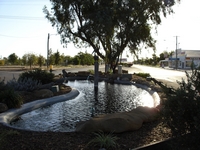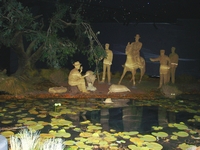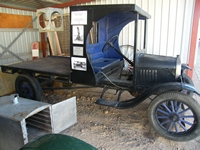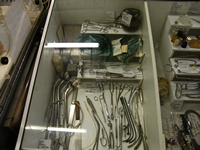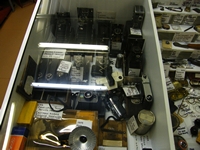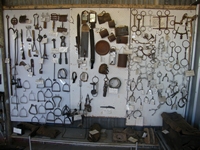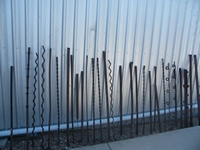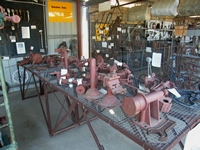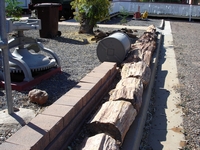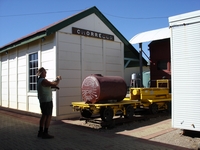Australia So Much to See


Winton - we follow the Dinosaur Trail with next stop at Winton; home of the Waltzing Matilda story and a town at the heart of the commencement of Australia Aviation.
Winton was once known as Pelican Pool, and the pond together with model pelicans in the centre of the wide main street is a reminder
of this past.
Our stay in Winton commenced with a visit to the Matilda Centre, where the story of the writing of the much loved Australian ballad Waltzing Matilda is told, but there is also so many more things to see and do at this Centre.
A devastating fire has burnt down the Matilda Centre, taking with it valuable original materials and artefacts. See the full impact of the loss here.
18th June 2015
An art gallery within the centre was exhibiting works from Albert Namatjira and his school of art, which including paintings by some
of his family as well as other Arrente artists. While many of the paintings were in the Namatjira traditional style, a few modern
style paintings did not compare with those of the classic Namatjira style of art.
The Waltzing Matilda journey starts with a visit to the Billabong Theatrette, where the ghost from the billabong tells the story from his side, with his hat spinning eerily over the dark still waters of the billabong. Characters from the story are illuminated as their roles in the events are talked about.
Update: From the ashes of the fire on 18th June 2015, the Waltzing Matilda Centre has been reborn. 20th April 2018
The Waltzing Matilda Story
While there are several theories on the full story of events surrounding the writing of the
song Waltzing Matilda, I put it that this is a likely scenario.
At Christmastime in 1894 poet Andrew Barton (Banjo)
During the next few weeks,
You have to ask, did the chorus “come a-Waltzing Matilda” have a double meaning directed
towards the young lady Christina?
In shame and humiliation Sarah felt forced to leave and went to live in
The words were probably inspired by the violent events surrounding a shearers' strike during which
time the shearing shed on the Macpherson family's station, Dagworth, was burnt to the ground. Union shearer Samuel Hoffmeister's
body was found by a nearby billabong the following day. He had been shot, and a hurried inquest or a cover up concluded he had
committed suicide. His body was found by grazier Bob MacPherson (Christina’s brother) in the company of three troopers. The waterhole is believed to be Combo Waterhole 132 kilometres north west of Winton and once part of Dagworth Station.
The
song was first performed at the
A large display of machinery, tools and collectible memorabilia take up several display sheds. These are well set out in contrast
to many other museums of similar era collectibles. Many of these reminded us of things we had seen in our grandparent’s or even
our own parent’s homes and farms.
QANTAS
On 23rd February 1921, Winton Shire resolved “to make a grant to QANTAS Ltd of half the amount expended in making a landing
ground for planes up to 20 pounds.”
Unveiled by James Strong, Chief Executive, QANTAS Airways Ltd 21st November 1920
Erected by Winton Shire Council and QANTAS Airways Limited and Winton’s WORC crew.
Signage at the site of the first Qantas airfield at Winton
WORC = Work Outreach Camp
Read more about Qantas history -
